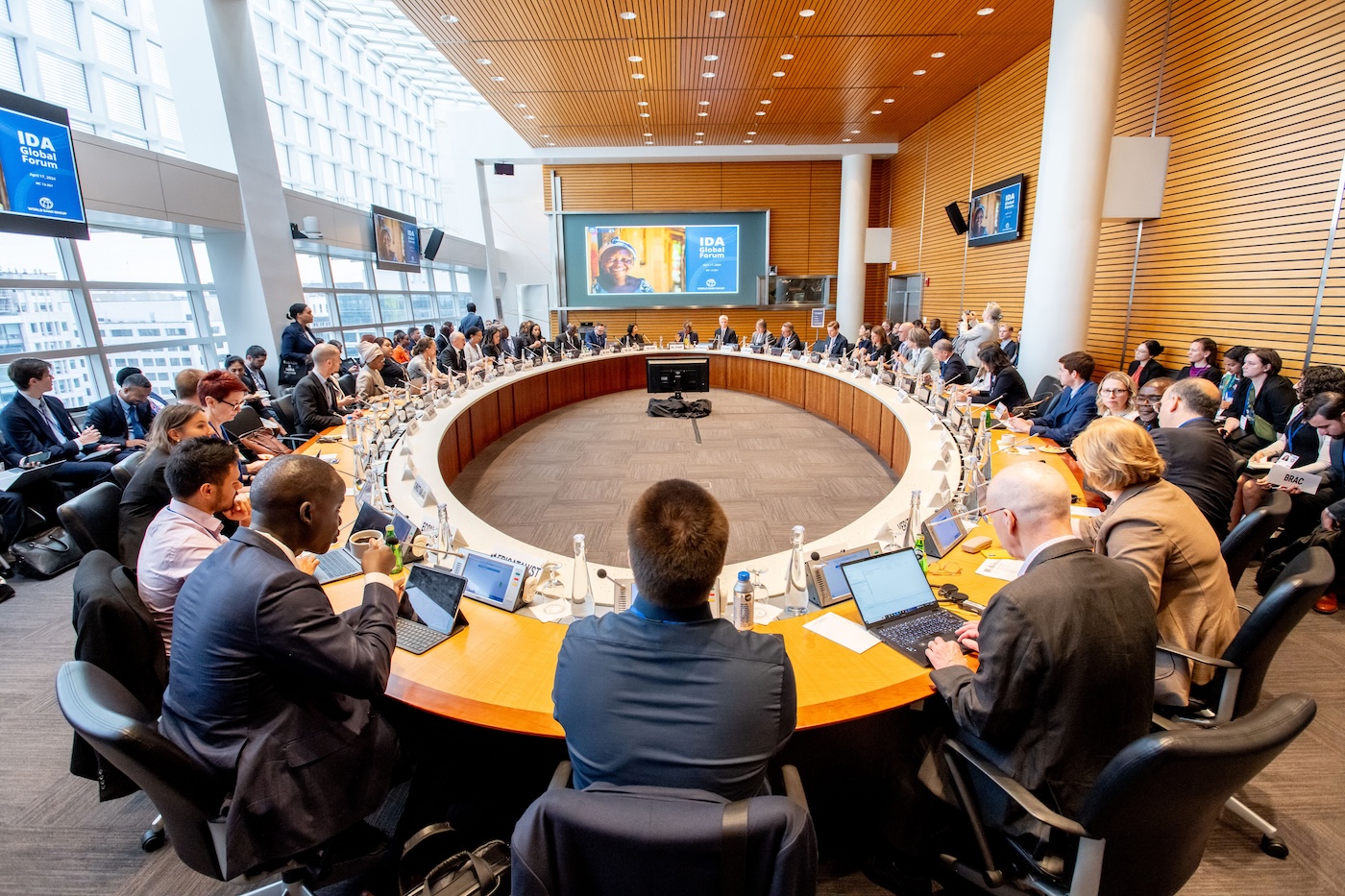Recommended
At the World Bank-IMF Annual Meetings last fall in Marrakesh, the Bank governors endorsed innovative financial instruments to boost lending at the International Bank for Reconstruction and Development (IBRD)—the Bank’s arm that lends to creditworthy countries. Some donor countries have signaled their readiness to provide additional financial support with the objective of strengthening the World Bank’s role in providing global public goods (GPGs), such as Germany (in the form of hybrid capital) and the US (in the form of guarantees). Other countries might follow suit, potentially boosting the World Bank’s ability to provide GPGs. However, this can only happen if the Bank succeeds in offering an attractive investment case to those potential donors. This unique opportunity also comes with a risk: that individual donor preferences and related special arrangements will undermine the Bank’s operational efficiency.
The key question is how the additional financial support will fit within the existing Bank portfolio and operations. This should be guided by the objective of better reconciling the Bank’s country-based model with incentives for activities which have positive transboundary effects, such as the protection of climate, biodiversity, pandemic prevention, and water resources.
To achieve this objective, we propose an enhanced GPG window. This window should integrate all categories of additional donor resources, which will be made available in the context of balance sheet optimisation, and which will not carry voting rights: portfolio guarantees, hybrid capital, or direct donor grants and concessional loans. Besides these contributions, this GPG window should also integrate the existing GPG Fund, established in the context of the 2019 capital increase and which is currently financed by net income only.
What the new GPG window would look like
The new, enhanced GPG window should be governed by a dedicated, unified framework. Donors would have the option to dedicate their respective contributions to specific GPGs, therefore, the establishment of sub-windows for issues like climate mitigation should be possible. We propose the following building blocks for the framework.
Building block one: An incentive and allocation system
The first building block would address that the fact that the Bank’s country-based model does not provide sufficient incentives to borrowers and to staff investing in projects and programs which have substantial transboundary benefits. Projects should be selected based on a cost-benefit analysis and subsidised or topped-up according to measurable cross-border externalities per unit of provided externality. The framework should assess the right size and type of financial support for those activities. This support could take various forms, in particular, better concessionality (in terms of interest rate buy-downs and longer tenures) and the topping-up of country allocations with more volume at standard terms. The extent and type of expected cross-border benefits must be the key criteria to determine the size of the financial support and the incentive instruments used. Therefore, a strict definition of positive externalities should be applied at the project level (no shopping list of global challenges!).
Beyond financial incentives, the Bank must further strengthen its role as provider of knowledge and as global convener on GPG issues. Most importantly, it should provide partner countries with state-of-the-art knowledge products and technical assistance. For this to happen, staff must be trained in building a meaningful dialogue on GPG-issues during the regular country engagement cycle, including on how countries can access the additional allocations. On climate mitigation specifically, the Country Climate and Development Reports would be a useful tool to support such a dialogue.
Decision-making in the Bank must also change. Most importantly, Regional Vice Presidencies would have to share budget and lending authority with the respective Global Vice Presidencies, which are oriented around cross-cutting issues like infrastructure or human development. Both would jointly present project or program proposals for financing. For example, a renewable project in Côte d’Ivoire would be presented jointly by the Vice President for Africa and the Global Vice President for Climate Change (and/or the Vice President for Equitable Growth, Finance and Institutions in the case of policy-based lending). This requires a major change in the Bank’s process organisation.
Related to the incentive and allocation system, there are other, more technical issues to be clarified, which should be less difficult to solve. One issue is how to benchmark existing GPG lending. This is necessary in order to monitor the additionality of GPG financing generated by the donor resources. Another related question is how to deal with reflows from loans related to GPG programs financed by the GPG window. One option is to agree on a baseline headroom corresponding to the existing capital base and apply the new system to the full amount of additional lending. It should also be kept in mind that the existing IBRD balance sheet would take advantage of the additional portfolio initiated by the new GPG window as the additional borrowing will go to richer countries with better credit-ratings.
Building block two: Impact measurement and monitoring systems
This second building block would ensure that financial incentives are operationalised at the project and country level through the new country engagement model. The system would enable the Bank’s management and board to define, measure, and monitor development impact, including externalities for all projects and programs. It can pull on existing tools, in particular the International Finance Corporation’s AIMM and the European Bank for Reconstruction and Development’s TIMS. However, these tools will have to be adapted, for two reasons. First, they are designed for private sector operations and not for sovereign operations. Second, although they take into account benefits external to the individual transaction, they do not consider cross-border externalities, such as those from climate mitigation.
In the event that it is not possible for an impact measuring and monitoring system to be established as a new tool for the entire Bank, the system should, at a minimum, be applied to all programs (co-)financed under the new GPG window. It could, at a later stage, be extended to all World Bank operations. Systems such as AIMM and TIMS have been proven to enhance focus and efficiency, as the same parameters are used to estimate ex-ante impact and monitor and measure ex-post impact. Applied to the GPG window, it would drive the allocation and use of the windows’s resources and ensure efficiency by enabling the comparison of the costs and benefits of alternative projects and instruments. Substantial preparatory work is needed to fully explore the potential of an impact and monitoring system. Most importantly metrics are needed in order to measure and quantify
the impact of various instruments aimed at reducing greenhouse gas, including investment lending, policy lending, and advisory. This would enable us to compare the effectiveness of different operations and instruments and ensure that funding is channeled to the operations with the highest global impact. As all multilateral development banks (MDBs) are called to increase their transformational impact, particularly related to climate protection, establishing metrics should be done jointly. In other areas, such as nature finance and pandemic preparedness and response, metrics are not as easily established and compared across countries, and further work is needed to standardise approaches.
As challenging as the establishment of such a system is, it has the potential to be transformational. For example, the Bank has previously been criticised for not systematically using policy-based lending instruments to support green fiscal and regulatory policy reforms, thus missing opportunities to achieve higher transformative impact at lower costs. Since this critique was first voiced years ago, the Bank has made some progress, particularly under its new president. However, there is still a bias against supporting green fiscal and regulative reform. For example, the planned global program on fostering renewable energy does not formally include the Vice President for the Equitable Growth, Finance, and Institutions, responsible for economic policies and the related policy-based lending instruments.
Building block three: Results system
Such a system is needed for the activities financed by the additional resources—with ambitious indicators tracking transboundary externalities. This results system must be coherent and, preferably, fully integrated into the Bank’s overall scorecard. This could be done in a similar way as planned for International Development Association (IDA): IDA currently has its own scorecard, but it is supposed to be integrated into the World Bank Group-wide scorecard. Equally, it would be desirable to integrate the high-level result indicators relevant to the GPG agenda into the overall World Bank Group scorecard. On that basis, the GPG window could find ways to contribute to those indicators. This would allow donors to impact on the workings of the new window without a (donor-specific) earmarking of “heir” dollars, yen, euro, sterling, or renminbi.
Governance challenges remain
The above framework, with its three building blocks, would ensure an efficient use of additional donor resources to reconcile the Bank’s country-based model with an enhanced role on GPGs. There are still important question to be tackled, such as to what extent this new enhanced GPG window needs a dedicated governance structure and what it should look like. IDA’s governance structure, which has worked quite well in the past, could serve as a useful example, as it allows donors to bring in their priorities for allocations, result indicators, and policy commitments. This is a very efficient way to allocate funds and allows for a fruitful conversation on priorities, approaches, and focus areas while avoiding any hard-earmarking of donor funds.
However, the GPG window cannot entirely replicate IDA governance as IDA has its own balance sheet, with its own board. A number of experts have suggested simulating that setup and creating an entirely new GPG institution with its own governance and balance sheet, but there does not seem to be sufficient appetite. Besides, the need for a comprehensive, dedicated governance structure is not acute. In fact, the above framework, once adopted by shareholders, would go a long way determining the resource allocation and workings of the new window. Nevertheless, it could be beneficial to anchor the GPG indow into a permanent institutional structure such as a multi-donor trust fund. In any case, the governance arrangement for the new window should be reviewed after a two-year pilot phase. In case of major difficulties, other options for the governance of the GPG-Window should be considered, such as a third World Bank pillar (next to IBRD and IDA) with its own governance structure or an omnibus trust fund. See: as well as
Time for a step forward
World Bank Group shareholders will decide in the coming weeks and months how additional financial resources will be used, and how this will fit with the existing financial model. The approach outlined above would provide a satisfactory solution to ensure the efficient use of GPG-dedicated donor contributions. It would allow shareholders to bring to bear their preferences in a way that would not undermine recipient countries’ ownership. It would decisively strengthen the Bank’s role as a provider of key GPGs and at the same time ensure that funds are used in the most impactful way where country demand would continue to drive allocations. It would offer an attractive investment vehicle to donors, potentially including non-governmental institutions such as philanthropists and sovereign wealth funds, mobilising additional funds beyond those provided by regular replenishments. Such a vehicle would also offer an alternative for donors investing money in so-called vertical funds as well as in the trust funds, which have multiplied in the last decades and contributed to the present’s very fragmented aid architecture. Contrary to those vertical and trust funds, a GPG window with the above features would allow leveraging donor resources by using the Bank’s ability to raise funds on the capital market. Over time, the new enhanced GPG window could evolve as a third World Bank pillar, next to IBRD and IDA, with a governance structure very similar to IDA’s.
Two concluding remarks: First, additional contributions must be additional. Most importantly, they must not come at the expense of un-earmarked contributions, particularly for IDA. The attractiveness of the offer should help countries to make the case vis-a-vis finance ministries and the general public. In that respect, the German experience might be instructive: Germany doubled the proportion of its budget devoted to official development assistance, or ODA, in a span of less than ten years. It might not be a coincidence that politicians in Germany argued from an early point that classical development issues and global public goods can only be managed jointly. Second, donor contributions to the enhanced GPG window must not only be additional but also substantial. A relatively small amount would not allow rolling out GPG action in a systematic way. It would also raise the suspicion that those amounts have been cut out from planned contributions to replenishments for IDA or other MDBs. The objective should be to equip the enhanced GPG window with a lending capacity of 50 billion sollars (over ten years), which would require donor contributions of about 7 billion dollars in the form of hybrid capital and donor guarantees.
There is momentum, including from donors, to make the World Bank a leader in tackling GPG issues. The challenge Bank leadership now face is to provide the right pathway to absorb that additional financial support and put it to the best use, without compromising what makes the Bank effective. Clearly, it can be done.
Disclaimer
CGD blog posts reflect the views of the authors, drawing on prior research and experience in their areas of expertise. CGD is a nonpartisan, independent organization and does not take institutional positions.
Image credit for social media/web: Adobe Stock







